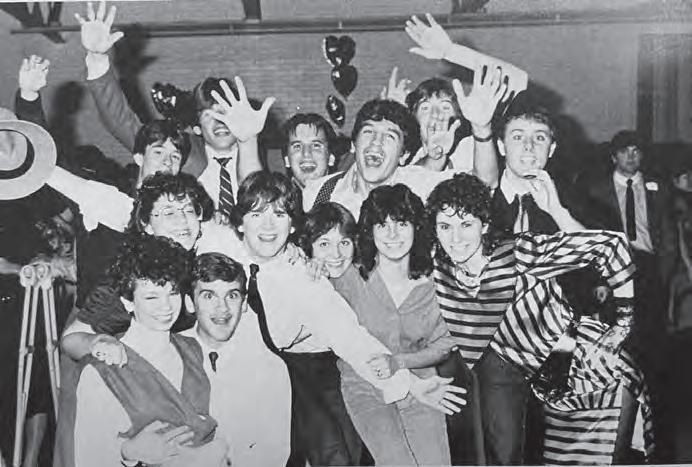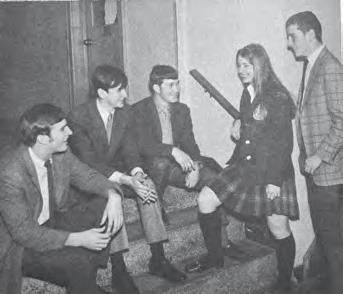
2 minute read
combined education
other perspective by working with people of different backgrounds with different challenges.”
“We tie our life and experience to our faith,” commented Father Shaffer, noting that the schools’ service projects “are grounded in the Gospels. When we feed the poor, it’s a Work of Mercy.”
“The spirit of education is here at Donovan Catholic,” said Kelly. “We provide students with a road map, so they acquire tools – life skills, faith formation, problem solving, decision-making, seeing different perspectives – to prepare them to go into the world.”
With the majority of the student body college-bound, the high school seeks to provide state-of-the-art educational methods and opportunities.
“We work to enhance our academics by creating new programs for what students want to pursue,” said Kelly. “Through extra-curriculars students can develop as artists, actors, and athletes if they choose.”
One key to promoting innovation lies in professional development for teachers to keep pace with latest technological advances and seek out state-of-the-art teaching practices.
In the elementary school, three teach-
Vintage photos show high schoolers during their tenures in St. Joseph High School, which went on to become Monsignor Donovan High School and then was renamed to its current Donovan Catholic. High School. Courtesy photo

TIMELINE:
ST. JOSEPH SCHOOL
1932: Guided by the vision of pastor Father George Walsh, St. Joseph School opens. Dominican Sister Dalmatia is principal, five Sisters of the Order of St. Dominic of Newburgh, N.Y., teach 103 pupils in four classrooms created by the division of church social hall.
1951: Ground is broken on North Hooper Ave. to build a new church and school.
1952: New school opens. Enrollment: 401 students. Faculty consists of seven nuns and three lay teachers under new principal, Dominican Sister Eucheria. Baby Boomers spur continuous growth and demand for additional space. Ten new classrooms and auditorium are constructed behind school and church.
1960: Enrollment reaches 1,358 pupils. Up until 1980, modular units are added as needed for additional space (for class- rooms and other school needs).
1970: Physical education is added to the curriculum. Debut of organized team sports: cross-country, basketball, and track.
1993: The new St. Joseph Church opens. Original church is redesigned as a gymnasium. Kindergarten moves to the basement of the new church.
1990s–2000: Athletic program expands to ten varsity sports. Spanish is added as world language. Advanced and accelerated math programs are introduced in grades four through eight. Use of technology expands as iPad stations, Smartboards appear. In 2013, fifth through eighth graders bring their own iPads to school.
2016–2017: PreK programs for three- and four-year-olds begin.
2019: St. Joseph School becomes a Notre Dame STEM Fellowship School.
Donovan Catholic High School
1962: St. Joseph High School opens with a faculty of eight teachers, four of them Dominican Sisters. Freshmen class consists of 115 students housed in Holy Family Hall at the grade school until November, when high school building – 12 classroom, offices, library, cafeteria, and medical suite – opens.
1965: Work begins on second phase of building.
1966: St. Joseph High School graduates its first class.
1970: Second phase of building is completed. Through 1994, campus continues to grow, including athletic fields and facilities.
1983: Bishop John C. Reiss renames the school to Monsignor Donovan.
1988: Edward Gere replaces Sister Carmella DiMatteo as principal. Office of Campus Ministry is added to the administrative team.
1993: New parish church is dedicated.
1998: Block scheduling is implemented.
2000: A 26-acre athletic complex opens on Whitty Road.
2006: Use of PC tablets ushers in new age of technology.
2008: Middle States Association evaluates school and renews accreditation for the fourth time.
2014: High school is renamed Donovan Catholic High School.







